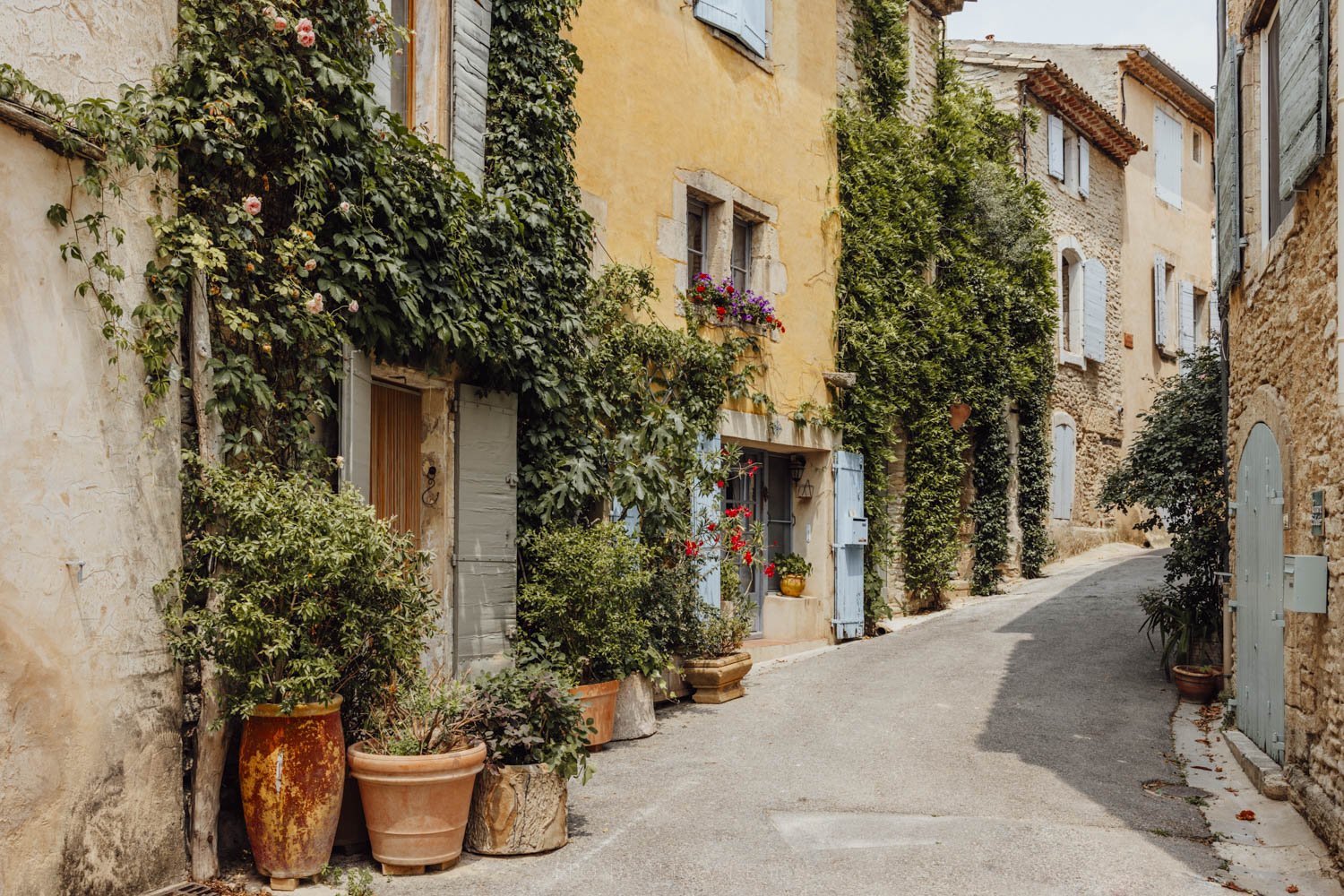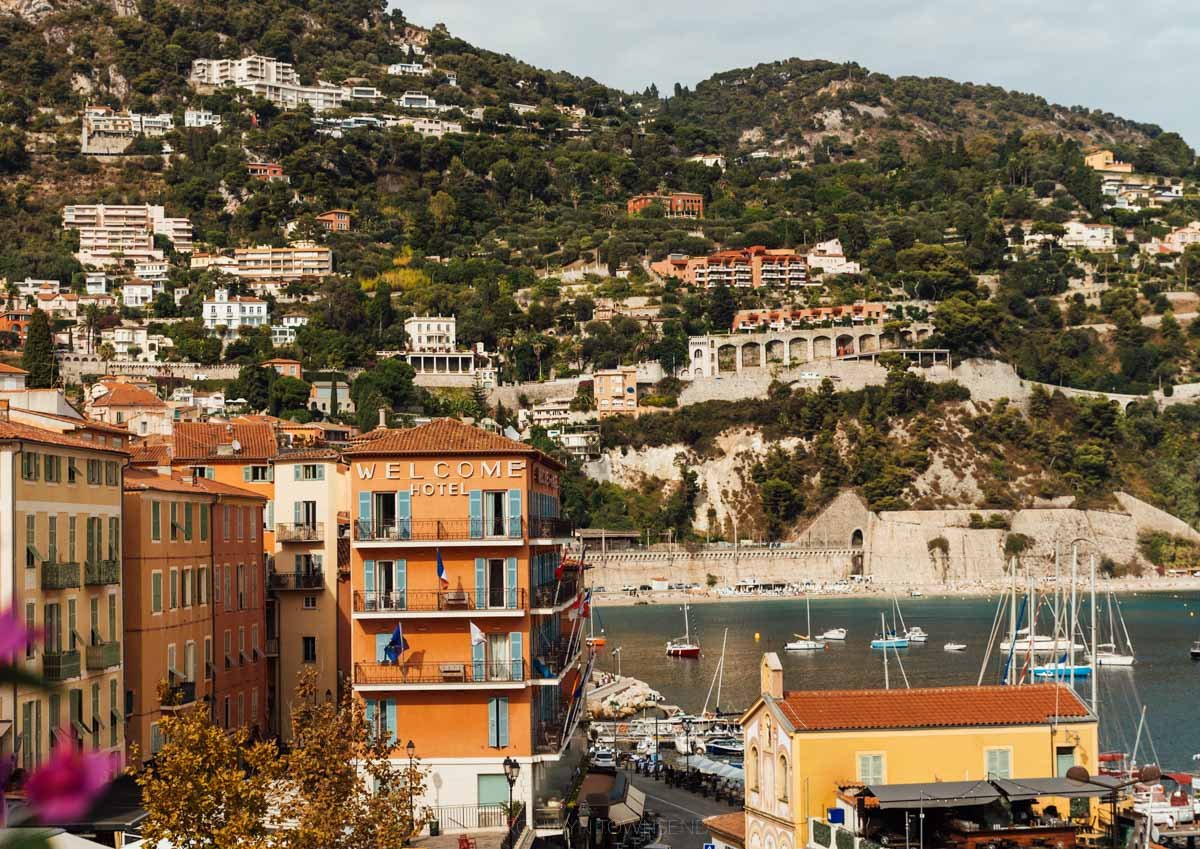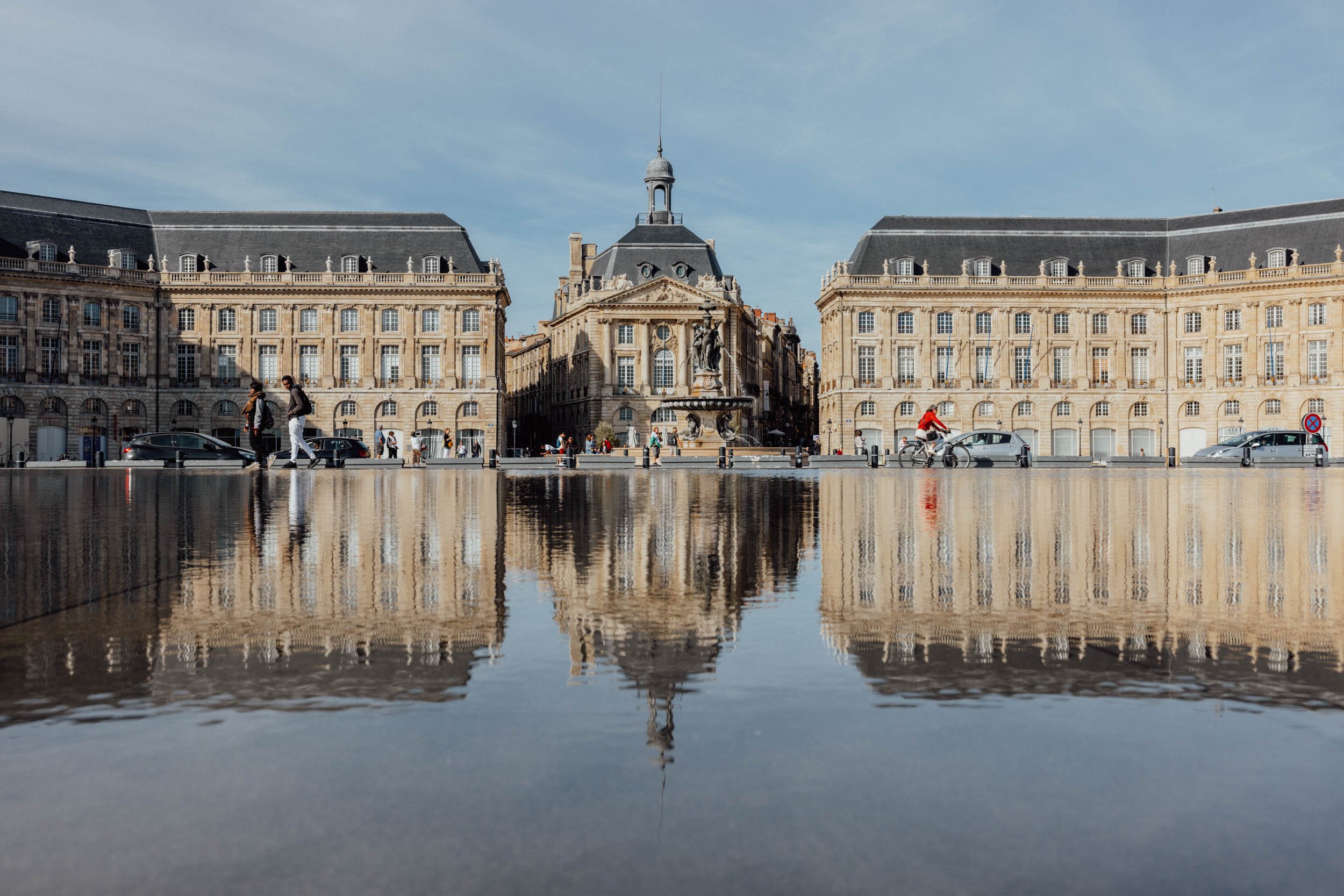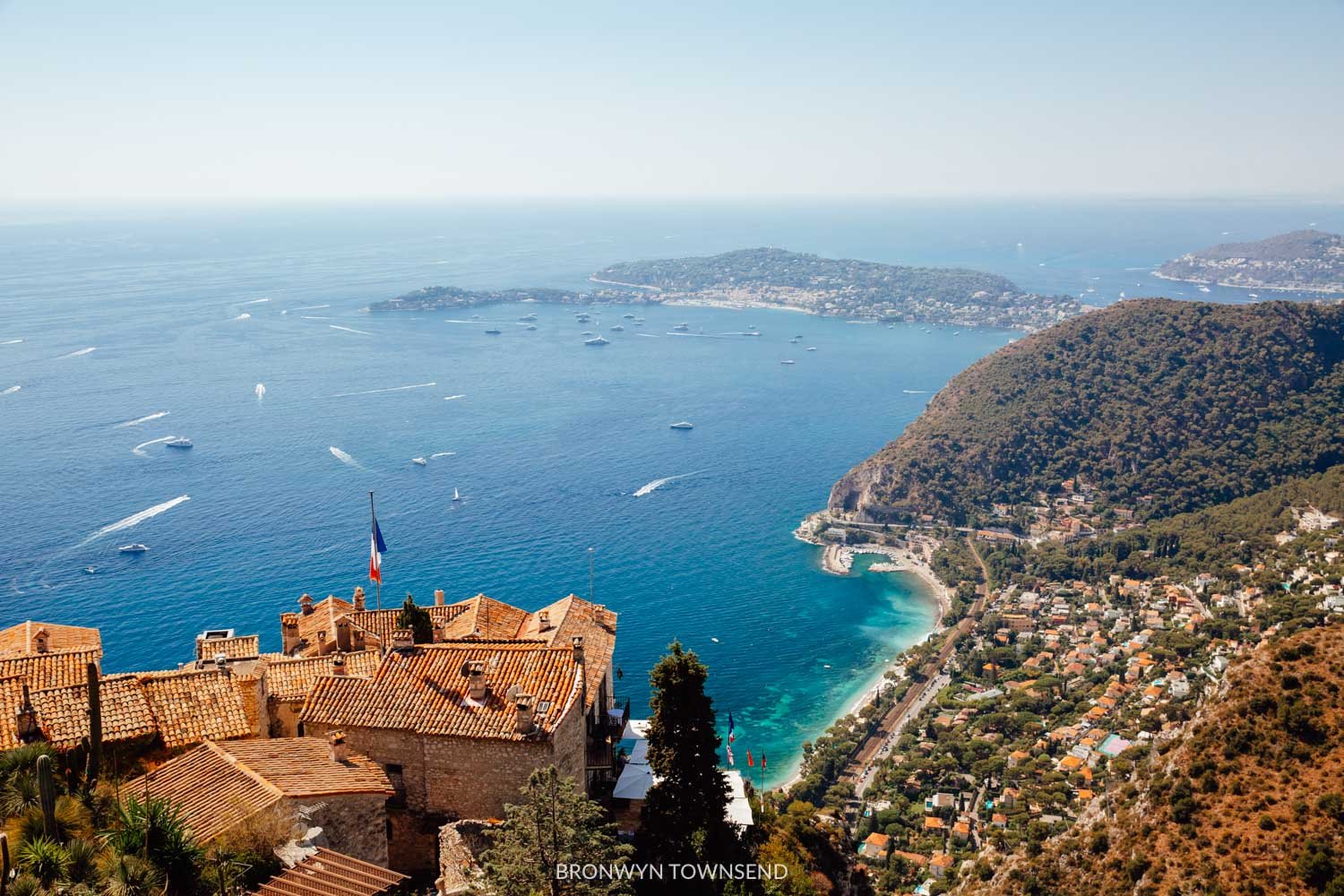How to spend 2 days in Bordeaux: A perfect weekend itinerary
In the beating heart of France’s most famous wine lands is Bordeaux, a handsome city built on the banks of the Garonne River. To make the most of two days in Bordeaux, immersing yourself in the sights, sounds, and flavours of the city is a must. Spend a weekend in this hub of wine-making with this easy-to-follow two-day Bordeaux itinerary.
This post may contain affiliate links.
If you choose to purchase I may receive a small commission at no additional cost to you. By using these links, you are supporting the ability for me to continue creating content for this site and its running costs.
The world’s love affair with Bordeaux spans centuries, favoured for its exceptionally good wine and outstanding architectural ensemble. Holding claim to the world’s largest urban World Heritage Site, the city is a UNESCO-listed reservoir of elegant Neoclassical grandeur.
Known as the Port of the Moon, this charming city is France’s 6th largest and is home to more protected buildings than any other city in France except Paris. With roots in the medieval wine trade, the city was a key port during the Age of Enlightenment. Now, it’s a hub of verdant vineyards that sprawl the landscape on either side of the Garonne River.
I’ve visited Bordeaux a few times and it always leaves me wanting more. My first visit was with a group of friends on a girl's trip in early October, the weather was delightful and the wine even better. Since then, I’ve returned to uncover more of the city’s opulence, gorge on more of the exceptional French cuisine, and generally soak up the beauty of this southwestern corner of France.
One of the things I loved most about Bordeaux is that it has all the charm of Paris without the same level of crowding and typical tourist fare. Authentic and inviting, the city exudes the epitome of the best of French living.
Two-day Bordeaux Itinerary
Many find their way to Bordeaux to weave between the vineyards of Saint Emilion, Medoc, and Pomerol, but with only two days, this itinerary focuses on Bordeaux as a city break. Don’t worry, no visit to Bordeaux is complete without wine, so there are plenty of opportunities to taste some of the best the region has to offer.
Bordeaux is a very walkable city and the majority of the city’s best sights are based in and around the city centre. This weekend guide to Bordeaux makes the most of the geography of the city so will focus on a few key areas, the historic centre in particular.
Day 1 - The best of Bordeaux Old Town
Your first day in Bordeaux will focus on the handsome historic centre of the city, taking in the best sights and attractions.
Breakfast at Books & Coffee
We enjoyed a great breakfast at Books & Coffee, a coffee shop, roastery, and cafe in one. For a caffeine hit to get your day started, they also serve a selection of freshly baked pastries, the way only the French can, as well as larger dishes including yoghurt and granola, and eggs. Located on Rue St. James, the interior of this cafe is decked out with stained glass windows, wooden detailing and shelves filled with books.
The Grosse Cloche
In the heart of Bordeaux’s Old Town centre is one of the oldest belfries in France. Grosse Cloche literally translates to ‘big clock’ and the bell which was cast in 1775 weighs around 7,750kg! The bell is not rung daily but instead reserved for the first Sunday of each month at midday, as well as for significant dates such as Bastille Day, VE Day, and Remembrance Day.
Historically, the tower the bell is held in served as a prison for youth who misbehaved. Today, you can take a guided visit of the gateway including a visit to the dungeons. The Grosse Cloche entry is included in the Bordeaux Pass.
Pey Berland Tower
If you enjoy views across the cities you visit, then Pey Berland Tower is a must. Previously, this was one of the tallest buildings in Bordeaux until a storm ripped out the rostrum in 1617. This free-standing tower was built in 1440, as an addition to the city’s cathedral because it couldn’t withstand the weight of the tenor bell.
You can climb the 229 stairs to the top of the 50-metre tower for views across the city, but make sure to pre-book your ticket as you can only enter with a pre-stamped timed entry. The ticket is €6 for adults or free with the Bordeaux City Pass.
Cathédrale Saint-André
Just opposite the Pey Berland Tower is the iconic Cathedrale Saint-Andre. Built in the 12th century, the Bordeaux Cathedral received UNESCO World Heritage status before the city did.
What was formerly a Romanesque church was transformed into a Gothic Cathedral between the 14th and 15th centuries and has been an icon of the city. Much of the church was destroyed during a great fire in the 19th century, but has since been restored to its former glory. One of the best examples is the royal entrance in the north wall of the nave which characterises 13th-century French Gothic architecture.
The church is open daily to visitors from 10am, though closes for a period around lunchtime each day. Entry is €6 or free if you have purchased the Bordeaux City Pass.
Lunch or drinks at Le Michel’s
You’ve likely seen the facade of this typical Bordelaise eatery grace your screen, and for good reason. Stop by for lunch or drinks and enjoy the al fresco seating for a classic French experience. Perched on the corner of Rue du Pas-Saint-Georges, you can people-watch as the world goes by while enjoying french onion soup, cheese boards, or meat-inspired dishes.
Opera National de Bordeaux and Pont de Pierre
Spend the rest of the afternoon meandering through the streets of Bordeaux’s historic city centre, popping into boutique stores and galleries. Be sure not to miss the square housing the Opera National de Bordeaux, a grandeur building featuring columns designed for a neoclassical facade.
Make your way down to the esplanade and continue along the waterfront of the Garonne and over to Pont de Pierre. This iconic bridge is especially important in Bordeaux’s history, as it was the first stone bridge to connect the left and right banks. Commissioned by Napoleon, it was inaugurated in 1822 and features 17 spans in its design. These days, the bridge is a modern tramway and a must-see in Bordeaux.
Dinner at Creme
There is no shortage of great restaurants in Bordeaux, but one of my favourites is Creme. With a seasonal menu rotating monthly, this fromagerie applies a modern twist to dishes using everything from ultra-light cheese foam to grilled aubergines with lamb and burrata.
Be sure to order local Bordeaux wines here, as the selection is broad and well-selected by the restaurant’s sommelier. While Bordeaux is famous for its reds, it also has some brilliant white wine varieties you may want to pair with your cheese-based dishes.
Day 2 - It’s all about wine
Even if you’ve had a glass or two of vin so far, there’s more to Bordeaux’s wine-making heritage than just the drink itself. Today, you’ll learn just about all there is to know about wine, as well as enjoy more of the stunning historic sights of the city.
Brunch at Contrast
If you’re a fan of a hearty brunch then Contrast offers one of the best in the city. With a boho-inspired interior complete with sheer curtains, pampas grass, and earthy tones, this place doesn’t just look good, it serves up great food as well.
On weekends they serve a three-course brunch menu with coffee and juice, and your choice of sweet and savoury dishes including pancakes, yoghurt and granola, and avocado with eggs on toast. This is the perfect way to start another day of exploring.
Located just around the corner from Place de la Bourse, it will place you right where you can start your sightseeing for the day. Contrast doesn’t take reservations on weekends, but we didn’t have to wait too long for a table to become free.
Le Miroir d’eau and Place de la Bourse
Much younger than many of the city’s historic attractions, Le Miroir d’eau has become a popular sight, especially in the summer as children play in the shallow waters. Set near the Quay against the backdrop of the Place de la Bourse, it has been granted contemporary World Heritage status by UNESCO.
Taking the crown for the most photographed monument in Bordeaux, watch as 2cm of water rhythmically changes over a large granite slab. The result is a beautiful reflection which is even more spectacular at twilight (so swing by here around sunset for comparison).
You can miss the elegance of the Place de la Bourse which frames Le Miroir d’eau. Built over 20 years throughout the 18th century, it has become an icon of the city, adored by locals and visitors alike.
The square features a fountain centrepiece, ‘The Three Graces’, made of bronze and marble depicting the daughters of Zeus who bore the names of Thalie, Aglaé and Euphrosyne, known as the Three Graces.
Guided tour of your choice (if you opted for the Bordeaux City Pass)
A guided tour can be a great way to get to know the city better, and if you choose to purchase the Bordeaux City Pass, you’ll have one of your choice included. Tours are subject to availability and must be booked through the tourist office.
You can choose from an eclectic van tour, a walking tour, an open bus tour, or a river cruise tour. Each will give you insight into life in Bordeaux, combining historical information with modern-day living.
Even if you don’t choose to purchase the City Pass, I’d recommend taking a river cruise to see Bordeaux from a different perspective. This is the tour I took, you can check for pricing and availability here.
La Cite du Vin
A cultural centre dedicated to all things wine, La Cite du Vin is a spectacular curation of the history and global heritage of wine. Opened in 2016, the building’s shape was inspired by the swirling motion of wine in a glass and has become an icon of the Bordeaux skyline.
This is more than your average museum. Instead, it offers visitors an interactive experience from the moment you enter. Giant screens display scenes of wine regions around the world, you can sniff scents from glass domes and explore the sensory tables to gain a deeper understanding of what makes wine the enigmatic drink that it is.
Once you’ve moved through the permanent and temporary exhibitions, make your way to the rooftop tasting desk where you can take in the views overlooking the Garonne River and wider Bordeaux.
Entry to La Cite du Vin is included in the Bordeaux City Pass, however an additional €5 is charged for entry after 12pm.
Wine tasting at Le Bar à Vin
You can’t leave Bordeaux without a little more wine, and Le Bar à Vin is a Bordeaux institution when it comes to sampling some of the city’s best. Set inside a gorgeous 18th-century building that doubles as the home of Bordeaux’s Wine Council (CIVB), you can expect warm wood interiors and stained glass window designs.
With wine from across all of Bordeaux’s appellations, you can order by the glass, tasting flights, and even a half glass. Small bites including fromage and charcuterie are available to accompany your wine discovery, and make sure to use the sommelier’s expertise to find the best wines for you.
Is 2 days enough in Bordeaux?
Wondering if just a few days is long enough to see the best Bordeaux has to offer? Whether you only have a weekend or are passing through on a long itinerary in France, two days will give you a taste of Bordeaux’s best sites and flavours.
You will be able to cover the main sights, sample some of the best wines in the region, and experience why it has come to be a much-loved destination in Southwestern France.
However, four days will allow a more leisurely pace to fully immerse yourself, including visits to the left and right bank wine regions including Saint Emilion.
What is Bordeaux best known for?
Bordeaux is best known as the wine capital of the world - no mean feat! France has long been crowned one of the best Old World wine regions, but this city in the southwestern corner lives and breathes all things wine.
There’s more to Bordeaux than wine though. The city is also known for its Gothic Cathédrale Saint-André, as well as 18th and 19th-century mansions and several notable art museums.
Is the Bordeaux City Pass worth it?
Like many major cities, Bordeaux has introduced a city pass which provides visitors with access to a range of museums, attractions, transport and more. These passes can provide great value if you make the most of the services and sights available.
Available for 24, 48, or 72 consecutive hours, the Bordeaux City Pass is worth considering if you plan on using public transport to get around and visit a few of the museums and monuments around the city.
How much does the Bordeaux City Pass cost?
24-hour pass - €34
48-hour pass - €44
72-hour pass - €50
You can purchase the pass online or at the local Tourist Office in the city centre. What is included with the Bordeaux City Pass? With every pass, regardless of which length you choose, you’ll have access to:
The City of Wine
The Pools of Lights
15 museums and monuments
Unlimited access to tram, bus, river shuttle
1 Bordeaux guided tour (to be booked at the tourist office)
Where is Bordeaux?
Bordeaux is a port city in southwestern France on the banks of the Garonne River. The city is the capital of the Aquitaine-Limousin-Poitou-Charentes region and a short distance from France’s Atlantic coast.
In 2017, Bordeaux was titled the capital of a much larger area of France called Nouvelle Aquitaine which spans from the Limoges region in the north and to the border of Spain in the south.
How to get from Bordeaux Airport to Bordeaux
Bordeaux-Merignac Airport is located just 13km from the city centre and it’s easy to reach by public transport.
The most convenient option is the 30-minute direct bus service between Bordeaux airport and Saint-Jean train station. Departing from Hall B at the airport, the coach drops passengers directly at Hall 2 at the train station in just half an hour.
Coaches operate the service every day of the year including public holidays and weekends, though the timetable runs from approximately 7am-8pm. If you have an early morning and later evening flight, you will need to consider alternative routes.
For public transport outside of the 30 Direct hours of operation, you can take a Lianes 1 bus from Hall B, Gate 7 at Bordeaux airport. This route connects passengers to downtown Bordeaux and Merignac. You can connect to the trams running in Bordeaux to reach your final destination. The Lianes 1 bus operates approximately every 10 minutes from 4:45am-12:20am.
Taxis and ride share services such as Uber are also available, though will cost more. This can work out cheaper if you have several passengers, with prices averaging approximately €30-45 from the airport to the city centre. You can grab a taxi any time of day during the operational hours of the airport from Hall A.
How to get to Bordeaux from Paris
The best way to get from Paris to Bordeaux is by a 2-hour high-speed train from Paris Gare Montparnasse to Bordeaux Gare Saint-Jean. France is well-connected by high speed trains to many large cities across the country and it's both efficient and more sustainable than flying.
The train between Paris and Bordeaux is operated by SNCF or OUIGO and the fastest service takes just over two hours. Prices start from €25 one way per adult but can exceed €120. The further in advance you book, the cheaper the tickets are.
You can also take a coach with Flixbus from Paris to Bordeaux which takes 6 hours and 40 minutes for the fastest service, and up to 9 hours for longer services. There are overnight coaches available.
Once you reach Bordeaux, you can connect to local trams and buses to move around the city if your accommodation isn’t close to the station.
When is the best time to visit Bordeaux?
A year-round destination, the best time to visit Bordeaux is between April and October. The city enjoys warmer weather for more of the year than northern wine regions in France, making it enjoyable from mid-spring to late autumn.
The harvest season runs from late-August to mid-October and is one of the most important times of the year. September is the ideal time if you wish to get a firsthand look at how the wine harvest season operates.
Summer can be hot in Bordeaux, so shoulder seasons from April-June and September-October are more comfortable for spending days exploring this very walkable city. It’s also typical in France, and especially in many of the smaller towns surrounding Bordeaux, for a lot of locals to leave their homes in August to enjoy the summer holidays. This can mean some restaurants and vineyards are not open during that time.
Where to stay in Bordeaux
If you are only going to be in Bordeaux for two days, you will want to stay in a central location which means you’ll spend less time getting around and more time making the most of the best the city has to offer.
Best luxury hotel | Le Boutique Hotel & Spa is an elegantly finished 18th-century townhouse surrounded by lush, green surroundings. Featuring a half indoor swimming pool, sauna, and hammam, there are a lot of high-end features to enjoy onsite. Make the most of sunny afternoons at the wine bar on the terrace from the heart of the historic centre of Bordeaux. Check availability and pricing here.
Best mid-range hotel | Hôtel La Maison Bord'eaux features modern facilities, spacious rooms, and an Avant Garde dining room. Located in the heart of Bordeaux, all the major attractions are within walking distance including excellent dining options. Perfect for couples, this stay offers comfort with a leafy exterior that is popular with guests. Check the price and availability now.
Best budget hotel | Hôtel Life Bordeaux Gare is located close to Bordeaux Gare Saint-Jean station with a range of transport links offering easy access. While a little further from the historic centre of the city, it’s an easy and enjoyable walk that can be done in less than 15 minutes. Facilities are clean yet simple, but ideal for budget-conscious travellers. Check availability and pricing.
Best for groups and families | Romance au coeur de Bordeaux / Jardin Public is a beautifully decorated holiday home with three bedrooms, a fully equipped kitchen and living space in the Chartrons district - just a short walk from the historic centre. Sleeping up to six guests, it’s ideal for families and group stays. I stayed here with a group of friends for a weekend and we loved the location and property as it was close to transport links and all major sights in the city. Check prices and availability here.
If you’re planning a trip to France, check out these other useful guides to make your planning easier.
More time in Bordeaux? Take a day trip to discover the best things to do in Saint Emilion
If you’ll be in Nice, consider these day trips to add to your itinerary
Explore the enchanting hilltop village Eze
Visit Perouges, a medieval city that’s an easy trip from Lyon


























